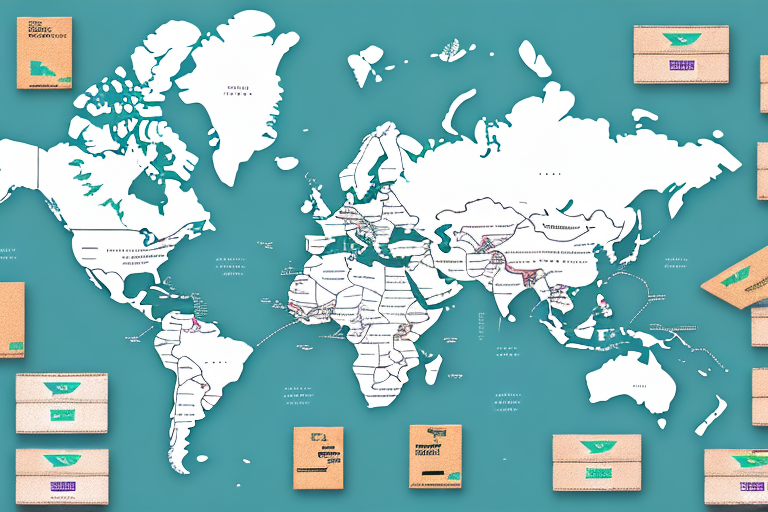How to Calculate Shipping Rates for FedEx in Different Regions
Are you a business owner or an individual looking to ship packages using FedEx? Shipping rates for FedEx can vary depending on several factors such as the destination, weight and dimensions of your package, shipping zones, and delivery times. Understanding these variables is crucial for optimizing your shipping costs and ensuring timely deliveries.
Understanding the Factors that Affect FedEx Shipping Rates
The cost of shipping with FedEx is influenced by various factors, including distance, package weight, dimensions, and the shipping speed you choose. Additionally, fuel surcharges, taxes, and duties may apply differently across regions, further impacting the overall cost.
The type of item being shipped also plays a significant role in determining shipping rates. For instance, hazardous materials or fragile items require special handling and packaging, which can lead to higher shipping costs. Proper labeling and packaging not only ensure compliance with FedEx regulations but also enhance the safety and efficiency of the shipping process.
According to FedEx's shipping guidelines, accurate information about your package is essential for precise rate calculations.
FedEx Shipping Zones and How They Affect Your Shipping Costs
FedEx divides the United States into eight shipping zones. The farther the distance to the destination, the higher the shipping costs will be. For international shipping, FedEx employs a similar concept by categorizing different regions globally to determine shipping rates.
It's important to note that the size and weight of your package also influence shipping costs. FedEx sets specific weight and size limits for each shipping zone, and exceeding these limits can result in additional fees. Additionally, certain items are restricted or prohibited from shipping, such as hazardous materials or live animals. Always check FedEx's list of restricted items before shipping to avoid unexpected costs or delays.
In 2023, FedEx updated its shipping zones to better reflect current logistics and transportation trends, ensuring more accurate rate calculations.
How to Determine the Weight and Dimensions of Your Shipment for Accurate Shipping Rates
The weight and dimensions of your package are critical factors in determining the cost of your FedEx shipment. To ensure accuracy:
- Measure the length, width, and height of your package using a reliable measuring tape.
- Use a calibrated scale to measure the weight of your package.
FedEx has specific guidelines for package sizes and weights. Exceeding these limits can incur additional fees. Moreover, the size and weight can affect the delivery time, as larger and heavier packages may require more time to process and transport.
If you're shipping large or heavy items, consider using FedEx Freight for more cost-effective options tailored to substantial shipments.
For more detailed guidelines, refer to FedEx's official rate calculator.
Using the FedEx Rate Tool to Calculate Shipping Costs
FedEx offers a comprehensive rate tool on its website to help you calculate shipping costs accurately. This tool considers various factors, including destination, weight, dimensions, and selected shipping speed, allowing you to compare different shipping options.
One of the significant advantages of using the FedEx rate tool is the ability to estimate delivery times. This feature is particularly useful if your shipment needs to arrive by a specific date, helping you choose the most suitable shipping method.
The tool also allows you to save shipping information for future use, streamlining the shipping process for frequent shipments. According to a 2023 FedEx report, users who utilize the rate tool experience a 20% increase in shipping efficiency.
How to Compare FedEx Shipping Rates with Other Carriers
Before finalizing FedEx as your shipping carrier, it's crucial to compare their rates with other carriers to ensure you're getting the best deal. Consider factors such as delivery times, shipping speeds, and any additional fees that may apply.
For example, while FedEx may offer competitive rates for domestic shipping, other carriers like UPS or DHL might provide better rates for international shipments. It's essential to research and compare rates specific to your shipping destinations.
Additionally, evaluate the customer service provided by each carrier. Reliable customer support, real-time tracking, and easy-to-use online tools are invaluable for managing your shipments effectively. According to a 2023 study by Transportation Research, customer satisfaction rates are significantly higher among carriers that offer comprehensive online tracking and responsive customer service.
Use comparison tools such as ShipStation's carrier comparison to evaluate different shipping options.
Tips for Negotiating Lower FedEx Shipping Rates
If you're a frequent shipper, negotiating lower shipping rates with FedEx is a viable option. Consider the following strategies:
- Enroll in FedEx loyalty programs: Programs like FedEx Rewards can offer discounted rates and additional perks.
- Use a third-party shipping broker: Brokers can leverage bulk shipping volumes to negotiate better rates on your behalf.
- Optimize your packaging: Use the smallest possible boxes and eliminate unnecessary packaging materials to reduce weight and dimensions, thereby lowering costs.
According to FedEx, businesses that optimize their packaging can reduce shipping costs by up to 15%. Additionally, regularly reviewing and updating your shipping strategies can lead to significant savings over time.
For more information on optimizing your shipping rates, visit FedEx's shipping optimization tips.
The Impact of Fuel Surcharges on FedEx Shipping Rates
Fuel surcharges are additional fees that FedEx applies based on fluctuating fuel prices. These surcharges can vary depending on the region and current fuel market conditions. It's essential to account for fuel surcharges when calculating your shipping costs to avoid surprises.
In 2023, fuel surcharges accounted for approximately 10-15% of the total shipping cost, making it a significant factor for businesses that ship large volumes. Monitoring fuel prices and adjusting your shipping budget accordingly can help manage these additional costs.
To minimize the impact of fuel surcharges, consider alternative shipping options such as ground shipping, which often has lower fuel surcharges compared to air shipping. Additionally, some carriers offer fuel-efficient shipping methods that can help reduce these charges.
How to Save Money on FedEx Shipping: Tips and Tricks
Saving money on FedEx shipping involves strategic planning and utilizing available resources effectively. Here are some proven methods to reduce your shipping costs:
- Use flat-rate boxes: FedEx offers flat-rate shipping options that can be more economical for heavier items.
- Ship during off-peak times: Avoid peak shipping seasons when rates are typically higher.
- Utilize prepaid shipping labels: Prepaid labels can help you lock in lower rates and avoid additional fees.
- Negotiate rates for high-volume shipments: Businesses that ship frequently can often secure discounted rates through direct negotiation with FedEx.
Additionally, FedEx Ground is a cost-effective option for non-urgent shipments, often cheaper than FedEx Express services.
Proper packaging is also crucial. Using sturdy boxes and accurate measurements can prevent damage and avoid extra charges. FedEx's packaging tips can help ensure your items are safely and efficiently shipped.
Understanding International Shipping Rates with FedEx
Shipping internationally with FedEx involves navigating complex factors such as taxes, duties, and customs regulations. Understanding these components is essential for accurate rate calculations and smooth delivery.
Currency exchange rates can also impact your shipping costs, as payments are often required in the destination country's currency. Utilizing FedEx's multi-currency tools can help manage these variations effectively.
Proper packaging is critical for international shipments. Ensure that your items are securely packed to withstand transit conditions and comply with international shipping standards. FedEx offers a variety of packaging options to accommodate different types of items.
Be aware of restrictions and prohibitions on certain items when shipping internationally. FedEx provides a list of prohibited and restricted items to help you comply with international shipping laws and avoid delays.
For more detailed information, refer to FedEx's international shipping guide.
How to Ship Large or Heavy Items with FedEx: What You Need to Know
Shipping large or heavy items with FedEx requires careful planning and adherence to their guidelines. Here’s what you need to know:
- Size and Weight Limitations: FedEx has specific size and weight restrictions for packages. Items exceeding these limits may need to be shipped as freight.
- Specialized Packaging: Use appropriate packaging materials to ensure the safety of your items during transit. FedEx offers specialized packaging options for heavy and bulky items.
- Freight Services: For exceptionally large or heavy shipments, consider using FedEx Freight services, which provide customized solutions for oversized shipments.
- Insurance Options: Protect high-value items by purchasing additional insurance. This coverage safeguards against potential damage or loss during transit.
Properly labeling your package with the recipient's address and your return address is essential to ensure smooth and timely delivery. For more information on shipping large or heavy items, visit FedEx's shipping large items guide.
Common Mistakes to Avoid When Calculating FedEx Shipping Rates
Calculating FedEx shipping rates accurately is crucial to avoid unnecessary costs and delays. Here are common mistakes to avoid:
- Underestimating Weight or Dimensions: Always double-check your package's weight and measurements to ensure accurate rate calculations.
- Choosing the Wrong Delivery Speed: Selecting an inappropriate shipping speed can lead to higher costs or delayed deliveries.
- Ignoring Additional Fees: Fuel surcharges, taxes, and duties can significantly impact the total shipping cost. Make sure to account for all potential fees.
- Poor Packaging: Inadequate packaging can result in damaged goods, leading to additional fees or the need for re-shipping.
- Incorrect Shipping Address: Double-check the recipient's address to prevent delays or lost packages.
By avoiding these common errors, you can ensure more accurate shipping rate calculations and a smoother shipping experience. For detailed guidelines, refer to FedEx's shipping best practices.
How to Get Accurate Quotes for Customized Packaging and Freight Services from FedEx
For shipments requiring specialized packaging or freight services, obtaining accurate quotes is essential. Here's how to proceed:
- Consult with FedEx Representatives: Contact FedEx customer service to discuss your specific needs and receive tailored quotes.
- Provide Detailed Information: Clearly outline the size, weight, and nature of your shipment, including any special handling requirements.
- Explore Customized Options: FedEx offers solutions such as crating, palletizing, and handling of dangerous goods, each with its pricing structure.
Utilizing FedEx's freight services specialized in customized packaging ensures your shipments are handled professionally and efficiently.
Understanding Delivery Times and Transit Options for Different Regions with FedEx
Delivery times and transit options vary based on the destination and the shipping speed selected. Understanding these options helps you choose the most appropriate method for your needs.
- Express Shipping: Offers faster delivery times, typically within 1-3 business days domestically and 3-5 days internationally.
- Ground Shipping: More cost-effective for non-urgent shipments, with delivery times ranging from 1-5 business days within the U.S.
- International Economy: Provides a balance between cost and delivery time for international shipments, usually within 4-7 business days.
FedEx also offers transit options tailored to specific regions, ensuring flexibility and reliability in your shipping strategy.
In 2023, FedEx introduced enhanced transit options to better accommodate global shipping demands, reducing delivery times by up to 20% in key international markets.
How to Track Your FedEx Shipment and Manage Delivery Exceptions
Tracking your FedEx shipment is essential for monitoring its progress and ensuring timely delivery. FedEx provides several tools to help you stay informed:
- Online Tracking: Use the FedEx tracking tool on their website to monitor your package in real-time.
- Mobile App: The FedEx mobile app offers convenient tracking features and notifications on the go.
- Delivery Alerts: Sign up for email or SMS notifications to receive updates about your shipment's status.
Managing delivery exceptions, such as address changes or delays, is crucial to prevent additional fees and ensure successful delivery. If an exception occurs, FedEx provides options to update delivery information or reschedule delivery times.
Effective tracking and management can significantly enhance your shipping experience, reducing the risk of lost or delayed packages. For more tips on managing your FedEx shipments, visit FedEx's tracking resources.
Calculating shipping rates for FedEx may seem challenging, but by understanding key factors like shipping zones, weight, dimensions, and delivery times, you can make informed decisions and find the most cost-effective options for your shipping needs.




















